Pre-pandemic, Phuket’s Patong Beach was not a place you’d go for peace and quiet.
On any given day during high season, this popular Thai beach town would be filled with tourists from all around the world. Jet skis, longtails and speed boats roared through its bright blue waters. Some pulled parasails, their colorful puffs of nylon kites moving through the skies, keeping harnessed bodies afloat.
Massive cruise ships could sometimes be seen anchored offshore.
In the evenings, the streets adjacent to Patong’s beach were packed with travelers till long after the sun slipped into the Andaman Sea horizon, the air filled with the shouts of taxi drivers, massage staff and restaurant workers, all in pursuit of the next customer.
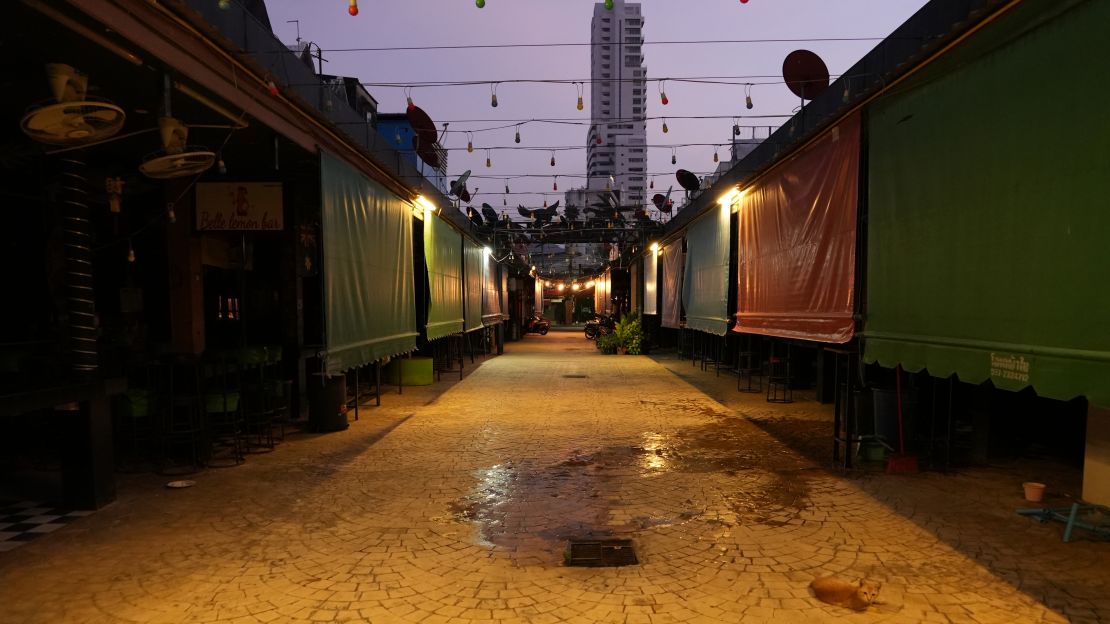
These days, Patong is unrecognizable. Its beach – a long, clean strip of beige sand – is free of crowds.
Nearby, the majority of businesses are shuttered, some with “For Rent” signs. Door handles are wrapped in chains and padlocks, while closed hotels have put up rope fences blocking the driveways to their entrances.
Even American chain outlets like McDonald’s, Burger King and Starbucks are shut.
Further south, similar scenes await visitors to the once popular beaches of Kata and Karon.
“The areas of Phuket island that have been hit the hardest are most definitely Patong, Karon and Kata beaches,” says Anthony Lark, president of the Phuket Hotels Association. “These three enclaves were 95% reliant on international tourism. And it dried up.”
For the few who decided to stick it out, life has been incredibly difficult.
“It’s very bad for us,” says Su Sutam, manager of Lobster & Prawn Restaurant on Kata Beach.
“Not many people come. We have only Thai people but not so many. In one day, only one or two tables. Normally we are full downstairs and upstairs.”
He says staff are only getting paid half of their regular salaries until international tourists return.
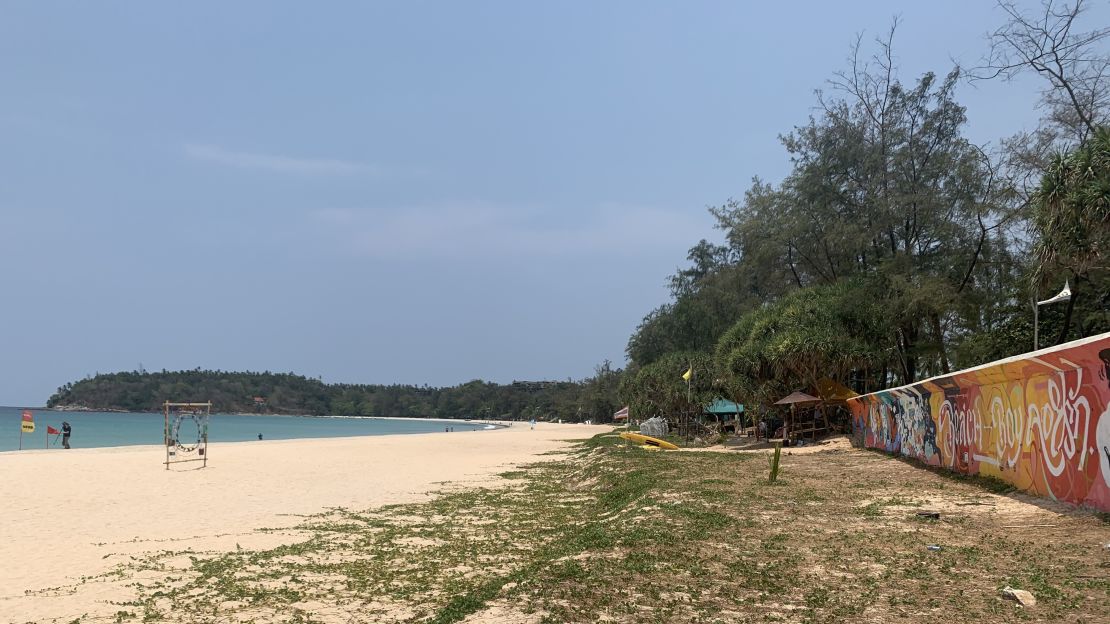
For the Phuket Elephant Sanctuary, founded in 2016, closing shop till the tourists return isn’t an option. Whether visitors come or not, the facility’s 12 retired working elephants, which live in the sanctuary’s 30 acres of jungle, need to be fed.
“It costs approximately between 20,000 and 30,000 Thai baht a month to feed one elephant,” says general manager Vincent Gerards.
With a dozen animals on hand, that’s about $7,500-8,000 each month. Prior to the pandemic, most of that money came from the many visitors that would pay to experience the sanctuary and observe the elephants for a full day.
“Around 85% of the population of Phuket relies on tourism in some form or another, whether they’re working in hotels or taxi drivers, fisherman – it’s all connected and we’re very dependent on international tourists,” says Gerards.
“So Covid obviously had a huge impact when we talk about elephant tourism in particular. More than 150 elephants living in Phuket have left the island since the beginning of Covid-19 because the camps had to temporarily or permanently close, and those elephants were then moved back to their owners who often live in other provinces.”
Government launches reopening plan
Thailand has fared incredibly well compared to other countries, reporting just over 30,000 cases and 95 deaths since the start of the pandemic. It shut its borders to international travelers in late March 2020 as Covid-19 began to spread, imposing strict quarantine measures on those who did arrive.
Most residents affected by the absence of tourists CNN spoke with say they are pinning their hopes on a new plan that would allow vaccinated international travelers visiting Phuket to skip the 7- to 14-day quarantine measures now in place.
“We hope for vaccines,” says restaurant manager Sutam. “If vaccine is okay we hope customers will come back.”

According to the Tourism Authority of Thailand (TAT), the approved plan will take effect on July 1.
“Phuket will be the first destination to lift quarantine requirements for vaccinated foreign tourists under the ‘Phuket Sandbox’ program,” says a TAT statement. “However, they will be restricted to travel activities within designated areas in Phuket for seven days and will then be allowed to visit other Thai destinations.”
The plan is reliant on efforts to vaccinate 70% of the island’s residents, with officials requesting more than 930,000 doses. According to a report in Phuket News, more than 70,000 Phuket residents have received their first dose of the vaccine.
But given only a small population of Thais has been vaccinated in the entire country, there have been criticisms in the press and on social media of moves to prioritize Phuket when many at-risk citizens elsewhere have yet to receive their own doses. Further hampering the program, a new outbreak of Covid-19 infections has emerged in recent days, forcing many in the country to cancel their Songkran (Thai New Year) travel plans.
CNN reached out to several government officials for further specifics on the reopening plan, as well as the status of vaccination efforts but as of publication time had yet to receive a response.
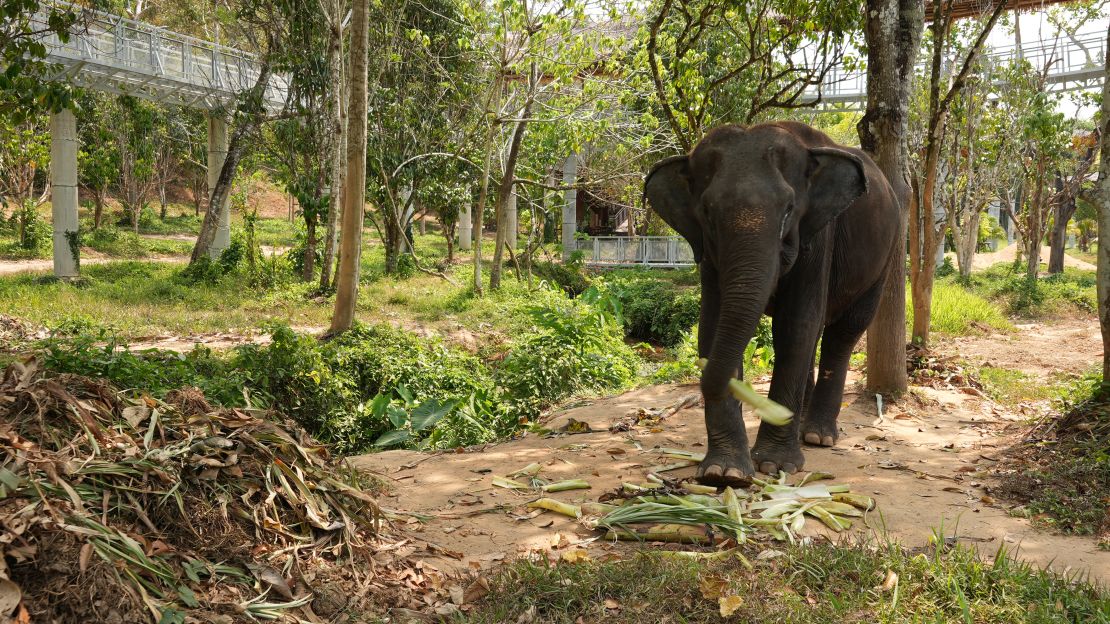
Nonetheless, for Phuket’s tourism players, the possibility that international tourists will return in just a few months is sparking cautious optimism.
“There is a glimmer of hope and a shining light at the end of our very dark, long tunnel,” says Phuket Hotels Association president Lark, noting that quarantine restrictions are what’s preventing the island from recovering.
“The fear factor here is quite high. There’s a lot of people in Thailand who don’t want foreigners coming in here carrying the virus. So the secret is to get the local community vaccinated to a level where we feel safe enough with the presence of antibodies in people’s systems to welcome back tourists without that fear.”
Lark, who has lived on Phuket for more than 30 years, notes that it will take a long time before tourism returns to pre-pandemic levels, but at least there should be enough business to sustain the employment of those who need it most.
“Fifty percent of the staff who work in the hotels in Phuket don’t come from Phuket,” he says. “They come from Krabi, or Trang, or other provinces around Thailand in the north/northeast. They relied on their salaries and service charges to support their moms and dads back home.”
For now, Phuket relies on domestic tourists
In the meantime, domestic tourism is keeping some businesses afloat – but just barely.
“It has literally been the oxygen that has enabled almost all of the tourism-related businesses on Phuket to continue to breathe and survive.” says Lark, who points to the Bangkok residents that have been flying down on the weekends and government holidays.
“But it’s unsustainable. Phuket’s tourism can’t survive at 6% to 8% occupancy. These hotels were designed to run at 30% to 40% occupancy to break even. So it’s helped stem the tide of outgoing grief, but it’s by no means sustainable, sadly.”
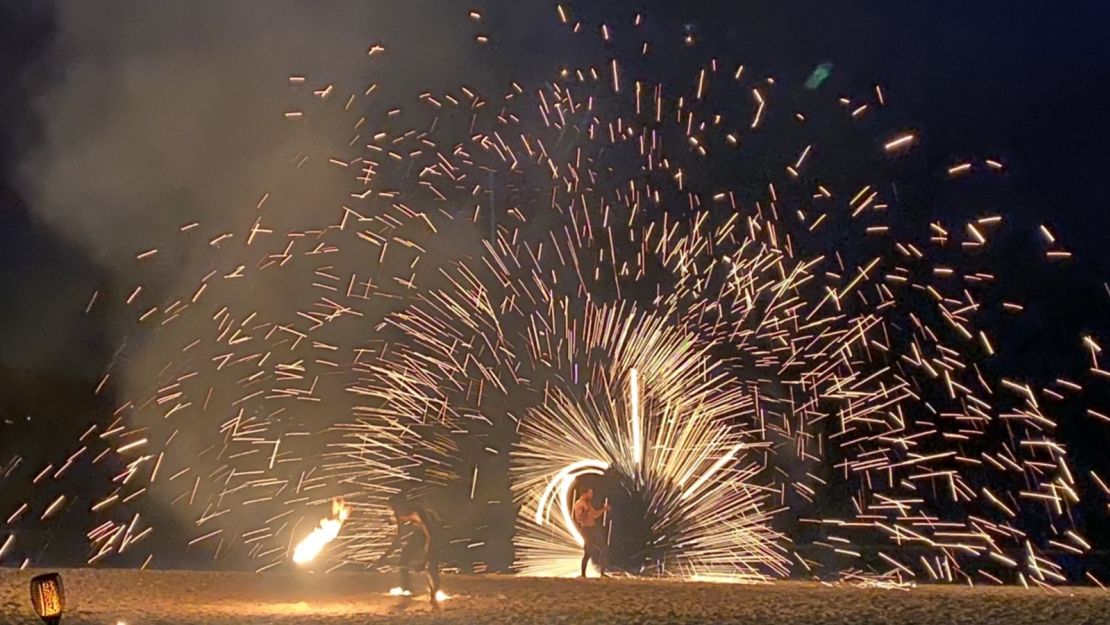
Rooms in big-brand luxury hotels that once cost upwards of $300 a night are now going for a fraction of the cost, though this has made it challenging for mid-priced hotels to compete.
Members of the island’s expat communities and local residents are also helping to keep restaurants and bars open, with areas such as Bang Tao Beach, near the large Laguna resort and residential community, still busy.
On a recent Sunday at the InterContinental Phuket Resort on Kamala Beach, the property was filled with guests enjoying the pool and beach bar – many of them local residents taking advantage of the Sunday brunch special. In the evening, a fire show on the beach had a full audience of spectators.
One of Phuket’s newest resorts, it opened in December 2019 but was only open for a few months before Covid-19 forced the island into lockdown.
Bjorn Courage, general manager, says the InterContinental Phuket opened in July of 2020 following the initial shutdown and adapted their strategy to appeal to both domestic travelers as well as local residents.
“This is a tough time,” he says. “Phuket does need international tourists, so at some point we do need to open up. I think everybody has been very creative to try to make the most of the situation that we are in at the moment. But we managed to find a way.
“We’re supporting the local community, and we were working closely with local government and central government to get ready, in order to re-open Phuket, and to re-open Thailand, and to be ready to welcome visitors from overseas.”
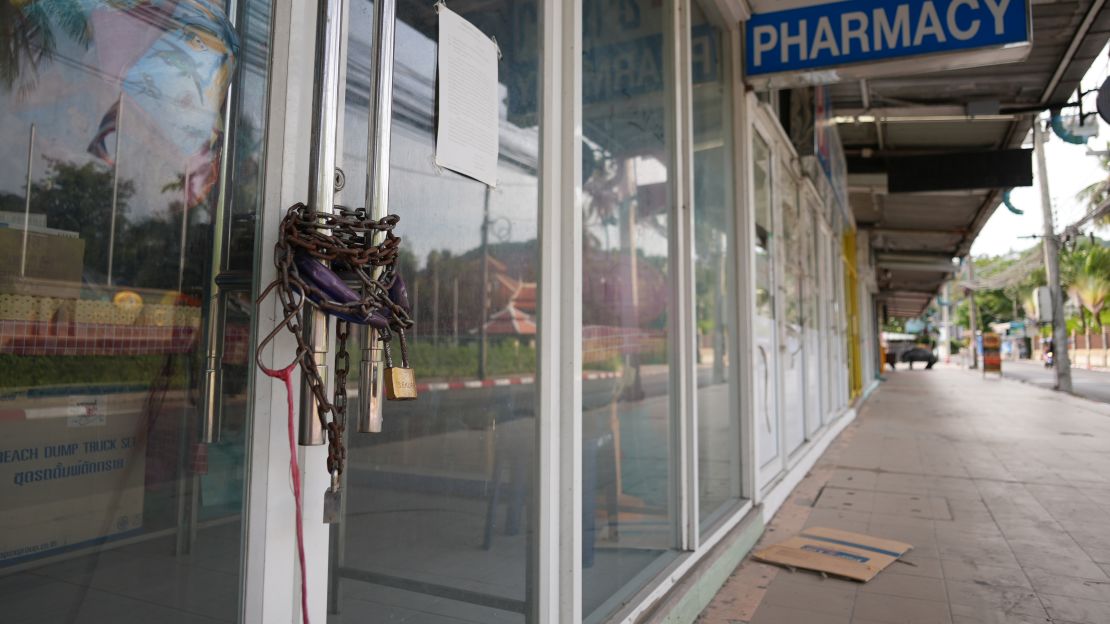
Far from the beaches, Phuket’s historic Old Town has been able to tap into the local markets as well.
Famed for its Sino-Portuguese heritage buildings, many of which have been converted into shops, cafes and bars, it’s a popular destination for island residents as well as Thai tourists. During a recent visit to its Sunday Walking Street Market, the area was filled with visitors – all wearing masks as per local regulations.
But the pandemic has forced some businesses in that area to change the way they operate. Property manager Vorakorn Suwannate is owner of Neighborgood x Origami Café on nearby Phangnga Road.
She says the lack of tourists prompted her to move her cafe – which was originally in a hotel – into a new space.
“We have to think about the local market,” she says. “There so many things to adjust. In the past we were familiar with serving in-house guests. After the Covid situation we had to adjust ourselves and promote the product that matches with the local people. It’s a hard job.
“In my opinion the vaccinations are the best solution to make things normal. If we got the vaccine for residents and international tourists I think situation will improve faster.”

Ekkapan, a street food vendor at Patong Beach, specializes in dishes from Thailand’s northeast Isaan region. He says the demographics of his customer base have shifted but – in spite of being in an area so reliant on international tourists – profits haven’t dipped.
“Before Covid my customers were 80% foreign tourists,” he tells CNN. “But now we are serving mostly Thai people. Same money but we have to work harder. Foreigners liked to order grilled dishes, which were easy to make. Thais prefer things like som tom (papaya salad) and larb (a spicy minced meat dish) which take longer.”
The Phuket Elephant Sanctuary has also had to adapt its programs to cater to the domestic market – shortening the time length of its programs and lowering prices while also creating remote online opportunities to connect with their many followers from abroad. It’s helping to put food in the elephants’ mouths, but what they really need is for international tourists to come back as soon as possible.
With the pandemic tossing out an endless supply of curveballs over the last year, a lot can happen between now and July. But Gerrards is hopeful.
“It’s great to finally see that light at the end of the tunnel and to have a pretty clear plan of what’s going to happen,” he says.
“We’re ready to welcome tourists again.”

















